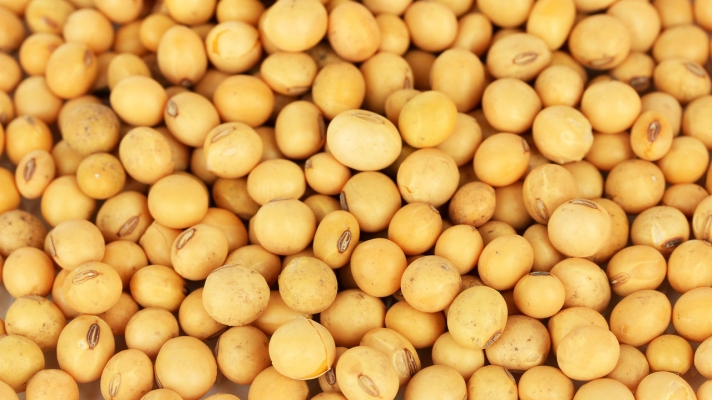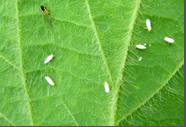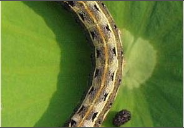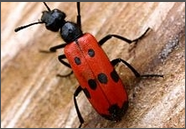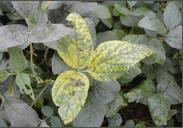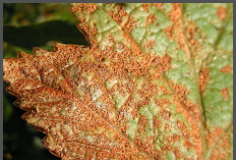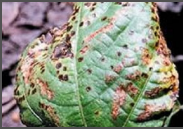Shivalik (Himso-333): It is a high yielding variety which is approved for growing in low hilly areas (altitude of 900m above sea level). It has 90-100cm long plant height. It gets ready in 115 days. Light Cream color hairs present on all plant and contain white color flowers. It has yellow color grains which are medium in size and contains 18.6% of oil content and 38% of protein content. The variety is resistant to yellow mosaic disease. It gives an average yield of 6-8qtl/acre.
Punjab No.-1: It is approved to cultivate lower and intermediate hilly areas. It has 70-80cm plant height and each plant bear 60-70 legumes. The grains are yellow in color and medium in size. It gets ready in 110 days. By growing of this variety in lower areas, there is medium outbreak of yellow mosaic disease. It gives an average yield of 6qtl/acre.
Lee: It is approved to grow upto an altitude of 1000m above sea level. It has 70cm long plant height. It has medium sized and yellow color grains. The variety is resistant to Bacterial spots.
Brag: It is a high yielding variety which is approved for low hilly areas. It has 80cm plant height and each plant bear 50-60 legumes . It has thick, yellow and shiny grains which contain 20% of oil content and 37% of protein content.
Harit Soya (P 4-2): It is a green grain variety which is approved to be grown in intermediate hilly areas. It bears deep brown color legumes which contains green color grains. The variety gets ready in 114-129 days. It is resistant to Bacterial spots and brown spots. It gives an average yield of 7.qtl/acre.
Palam Soya (P30-1-1): The variety is approved for growing in intermediate hilly areas. It is suitable for early and timely sowing. The plant remains small and the plant height is 75cm long. It is moderately resistant to leaf spot, wilt and Bacterial diseases. The variety gets ready in 120-12 days and gives an average yield of 6-8qtl/acre.
Himso 1588: The variety is approved for growing in intermediate hilly areas where there is no problem of Yellow Mosaic virus. The plant height is 79cm long. The variety is resistant to brown spots and is moderately resistant to withering and bacterial spots. The variety gets ready in 118-123 days. 100 seeds weight approximately 11gm. The seeds contain 42% of protein content and 19% of oil content. It gives an average yield of 7.5qtl/acre.
Other states varieties:
JS 93-05: Resistant to collar rot, pod and bud blight. Seeds are greenish yellow color.
JS 95-60: Ready to harvest in 82-88 days. It is resistant to root rot and various insect, pest.
JS 335: Early maturing variety resistant to bacterial blight and tolerant to stem fly, bud blight. Gives average yield of 10-12qtl/acre.
Pratap Soya 1, Pratap Soya 45 (RKS 45),
JS 97-52: High yielding variety gives average yield of 10-12qtl/acre. Ready to harvest in 98-102 days. It is resistant to yellow mosaic virus, root rot etc.
RKS 24
VL Soya 63
VL Soya 59
NRC 37 (Ahilya 4): Seeds are of light to dark brown color. It gives resistance to collar rot, pod and bud blight also resistant to stem fly and leaf minor.
MAUS 47: Resistant to bud blight, collar rot, Anthracnose, gray semilooper etc. Seeds are yellow color.
MAUS 61-2: Seeds are of yellow color. Resistant to pod shattering. Seeds are light brown color.
Alankar, Ankur, Bragg, Lee, PK 262, PK 308, PK 327, PK 416, PK 472, PK 564, Pant Soybean 1024, Pant Soybean 1042, Pusa 16, Pusa 20, Pusa 22, Pusa 24, Pusa 37, Shilajeet, VL soya 2, VL soya 47, MAUS 158, VL soya 65, VL soya 59, SL 525, Pratap Soya 2, TAMS 9821, Phule Kalyani (DS 228), Pusa 9814, Co (SOY)-3, LSB-1, Hara soya.

